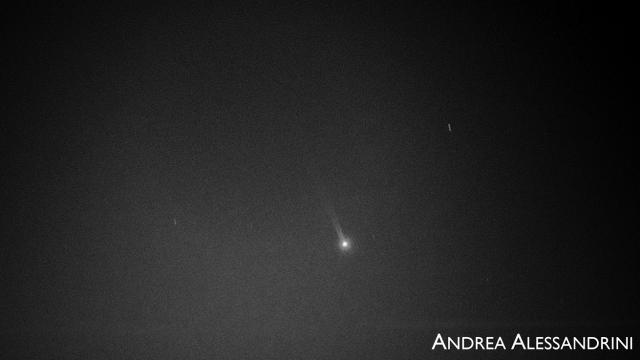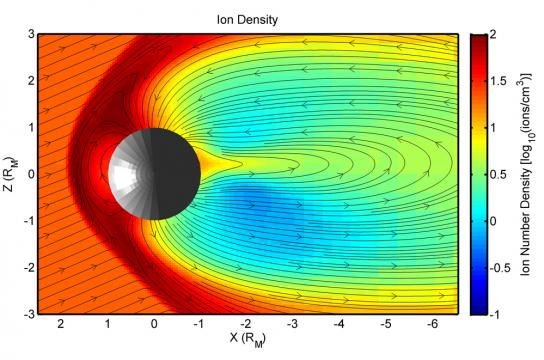Did you know? Not only comets have tails. The Moon, Mercury do too
By Tony Rice, NASA Ambassador
The Sun is constantly pushing out a stream of plasma and charged particles from its upper atmosphere, the corona. This solar wind moves at about a million miles per hour to escape the Sun's tremendous gravitational pull.
You have probably seen the effects of the solar wind in comet tails. These "tails" are created as gasses expelled by the comet form a line pointing directly away from the Sun.
Comets aren't the only objects in the solar system sporting tails. A tail of sodium atoms also constantly streams 15 million miles behind the planet Mercury.
Scientists first predicted the tail in the mid-1980s, theorizing that solar wind might be strong enough to lift particles from the planet’s surface. It was first observed in 2001 and further details were revealed by the MESSENGER between 2011 and 2015 as it orbited the planet.
A combination of solar wind and micro-meteorites sputter atoms, mostly sodium with a little calcium and magnesium, off the planet's surface. Tiny Mercury holds onto some of those atoms forming the thinnest of atmospheres.
solarwind around Mercury
Pressure from the solar wind streams around the planet guiding the atoms into a thin tail that always points from the Sun.
The Moon's tail
Earth is actually passing through a similar thin sodium ion tail stripped from the Moon right now. This happens around each new Moon as the Sun, Moon and Earth line up.
A team of researchers at Boston University, led by Prof. Michael Mendillo, regularly monitor that tail using cameras capable of spotting sunlight scattered by as few as 5 atoms per cubic centimeter. For comparison, Earth's atmosphere is six billion times denser.
Planets of the Solar System | Planet Facts, Dwarf Planets, Size Comparisons and Space Science
You can see Mercury low in the sky on the western horizon this week. It will be joined by the thinnest of crescent moon Monday. For aspiring astrophotographers, long exposure with a 589-nanometer filter and a lot of patience might reveal Mercury's tail.
Mercury: The Desolate Planet
https://www.wral.com/mercury-s-tail/20260519/



